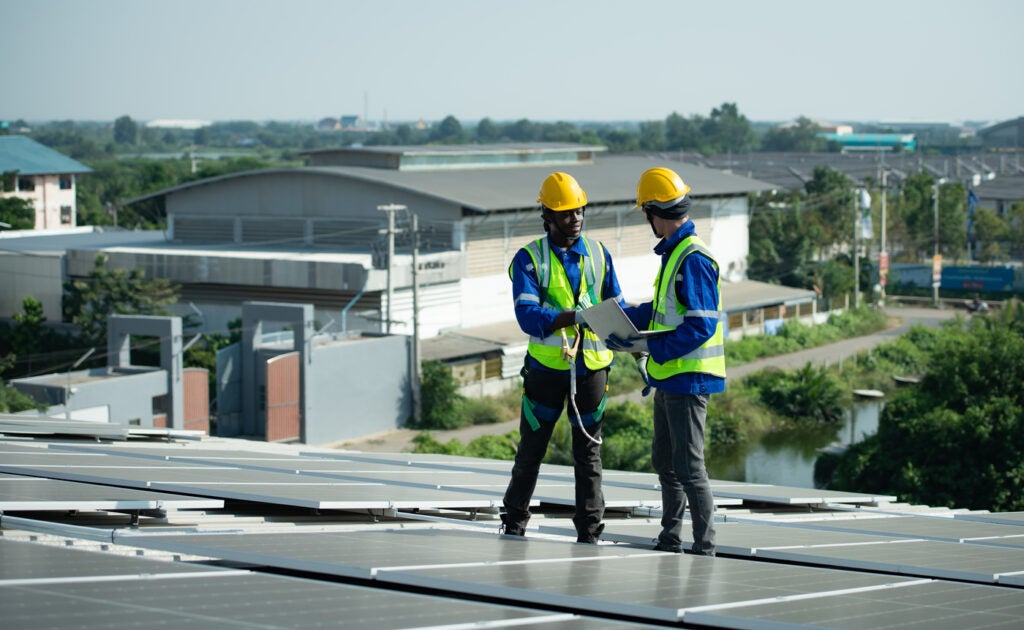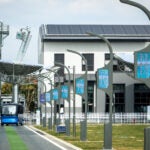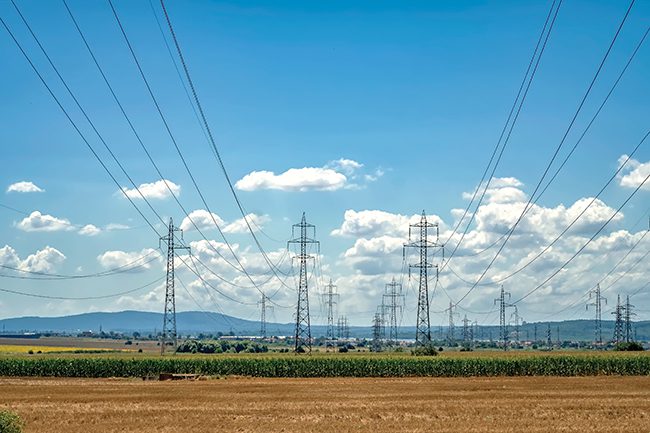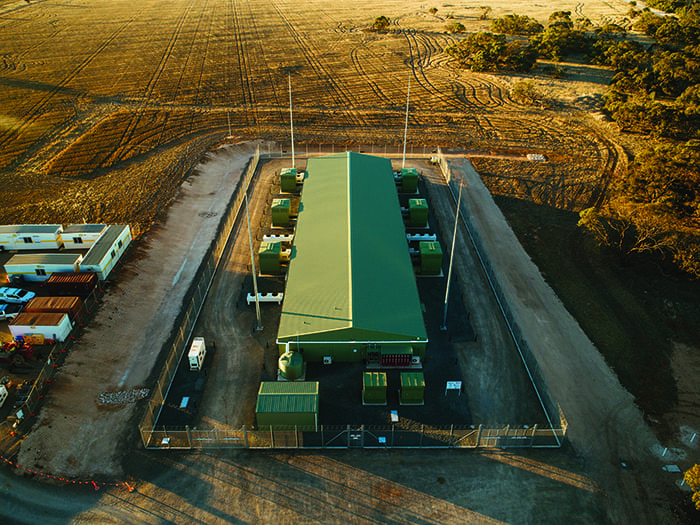As you enjoy the comforts of air-conditioned homes, chilled watermelons at outdoor gatherings, or a cold beer at a barbecue, or perhaps as you charge a new electric vehicle, have you ever stopped to think about where the electricity comes from to make all these conveniences a reality?
According to the International Energy Agency, global annual renewable capacity additions are expected to rise from 666 GW in 2024 to almost 935 GW in 2030. Solar photovoltaic (PV) and wind resources are forecast to account for 95% of all renewable capacity additions through 2030. As the energy structure undergoes a significant transformation, an increasing share of new energy is expected to supply the world’s electricity needs. This shift is being driven by the rapid development of future power systems using new energy. Meanwhile, digital and intelligent technologies are being widely used in power generation, power grid, and energy storage.
Ensuring electric power balance is critical. But what exactly is electric power balance? The power load at any given moment must be met by power plants, with the amount of electricity generated matching the amount consumed. However, energy yield varies between, for example, sunny days, rainy days, windy days, and windless days. On the power consumption end, the growing adoption of new electric vehicles and fast chargers is putting additional pressure on the power grid, particularly with regards to short-term power surges. This necessitates robust dispatching capabilities.
During power dispatching, the power communication network serves as the foundation for power grid dispatching automation and the cornerstone of ensuring a power grid with highly secure and stable operations. First, the power communication network must provide exceptional reliability to support the secure and stable running of key production services. Besides this, as the number of intelligent terminals is expected to increase 100-fold by 2030, the power communication network must be capable of supporting 100-fold terminal connections while maintaining low latency. In addition, the proliferation of intelligent terminals also generates an enormous influx of data, necessitating the power communication network to build ultra-high-bandwidth capabilities in advance to accommodate these data floods.
In light of the evolving demands of new future power systems, traditional synchronous digital hierarchy (SDH) networks are no longer sufficient to meet the service requirements. To address this challenge, fine-grain Optical Transport Network (fgOTN) is released by ITU-T as the next-generation communication technology and standard to replace SDH. It is critical to building a highly reliable, efficient, and secure electric power communication network.
2024 marked the first year for the development and commercial use of the fgOTN standard. Standards organizations, research institutes, the electric power industry, and device vendors are actively exploring the application of the standard.
How Does fgOTN Become the New Trend of Power Communication Networks?
As the electric power industry undergoes digital and intelligent transformation, the long-standing reliance on SDH for building electric power communication networks is being reevaluated. Indeed, SDH is no longer able to deliver the high-bandwidth service bearing and operations and maintenance (O&M) management required by the industry.
As the electric power industry enters this new era, there is a pressing need for a next-generation power communication network that can support the construction of future power systems. Inheriting the high reliability and deterministic latency of SDH in carrying small-granularity services, fgOTN can access power production control services in a secure and stable manner. In addition, fgOTN can use the bandwidth expansion capability of OTN technology to deliver the high bandwidth and high transmission efficiency required by future electric power systems. This makes it an ideal choice for SDH network upgrade as well as digital and intelligent power grid construction.
According to fgOTN White Paper for Electric Power, fgOTN can be used to implement unified all-optical bearing of power backbone, power transmission and transformation, power distribution, and power transformation campus networks. In terms of the architecture, fgOTN provides end-to-end one-hop connection from the power distribution and transformation campus to the backbone network, ensuring high service reliability, protecting investment, and reducing operationing expenses (OPEX).
Building a Power Communication Network Using fgOTN to Facilitate the Construction of Future Power Systems
In 2024, fgOTN became a center of focus among power grids, power generation, design institutes, universities, and electric power associations, as well as the core driving force for building intelligent connections in future power systems. It can help ensure ultra-high reliability of electric power services, improve network bandwidth, ensure scalability of electric power services, and improve ubiquitous service access capabilities of electric power networks.
For the power transmission and transformation communication network, the optical communication network solution for power transmission and transformation is based on the fgOTN standard, ensuring that production services are carried by hard pipes and providing better network access capabilities and network bandwidth. On power distribution networks, technologies such as physical-isolation PON realize chip-level physical resource and timeslot isolation, and integrate multiple networks into one. This greatly saves optical fiber resources and improves network utilization and management efficiency. Both fgOTN and physical-isolation PON are hard-isolated technologies. They implement end-to-end networking and service provisioning, adapt to power transmission, transformation, and distribution scenarios, and simplify network O&M.
Accelerate Digital and Intelligent Transformation, Fully Unleashing New Productive Forces of Electric Power Systems
At the beginning of 2024, the world’s first fgOTN-based communication device services were tested on the live network of State Grid Liaoning Electric Power, one of the provincial subsidiaries of the world’s largest electric power utility—State Grid and providing electricity to more than 43 million people. By adopting the fgOTN network architecture, State Grid Liaoning Electric Power achieved secure and fast transmission of small-granularity (2 Mbit/s) and large-granularity (1,000 Mbit/s) services while greatly improving the network bandwidth. This breakthrough represents a significant step forward in the evolution of power communication network technologies.
Another provincial subsidiary of State Grid—State Grid Shandong Electric Power, together with China Electric Power Research Institute, State Grid Electric Power Research Institute, and Huawei jointly built China’s first fgOTN test ring network. They also took the lead in testing and verifying the running of the teleprotection services on ring networks, with the results showing that fgOTN meets the technical requirements of teleprotection fiber channels.
As fgOTN standardization and industrialization picks up speed, the support and efforts of the industry chain are crucial. Currently, a number of provincial electric power companies and research institutes in China are ramping up the research, argumentation, and application of fgOTN, aiming to lay a solid foundation for the construction of next-generation electric power communication networks.
Amid the rapid digital and intelligent transformation in the electric power industry, intelligent connections have become the key to unleashing new productive forces of electric power systems. In the transition from SDH to fgOTN, the continuous evolution of electric power communication network technologies is necessary for meeting current requirements for carrying electric power production control services, as well as supporting the rapid growth of electric power services. Such innovation will no doubt pave the way for the high-quality development of the electric power industry.
—POWER edited this content, which was contributed by Huawei.



















